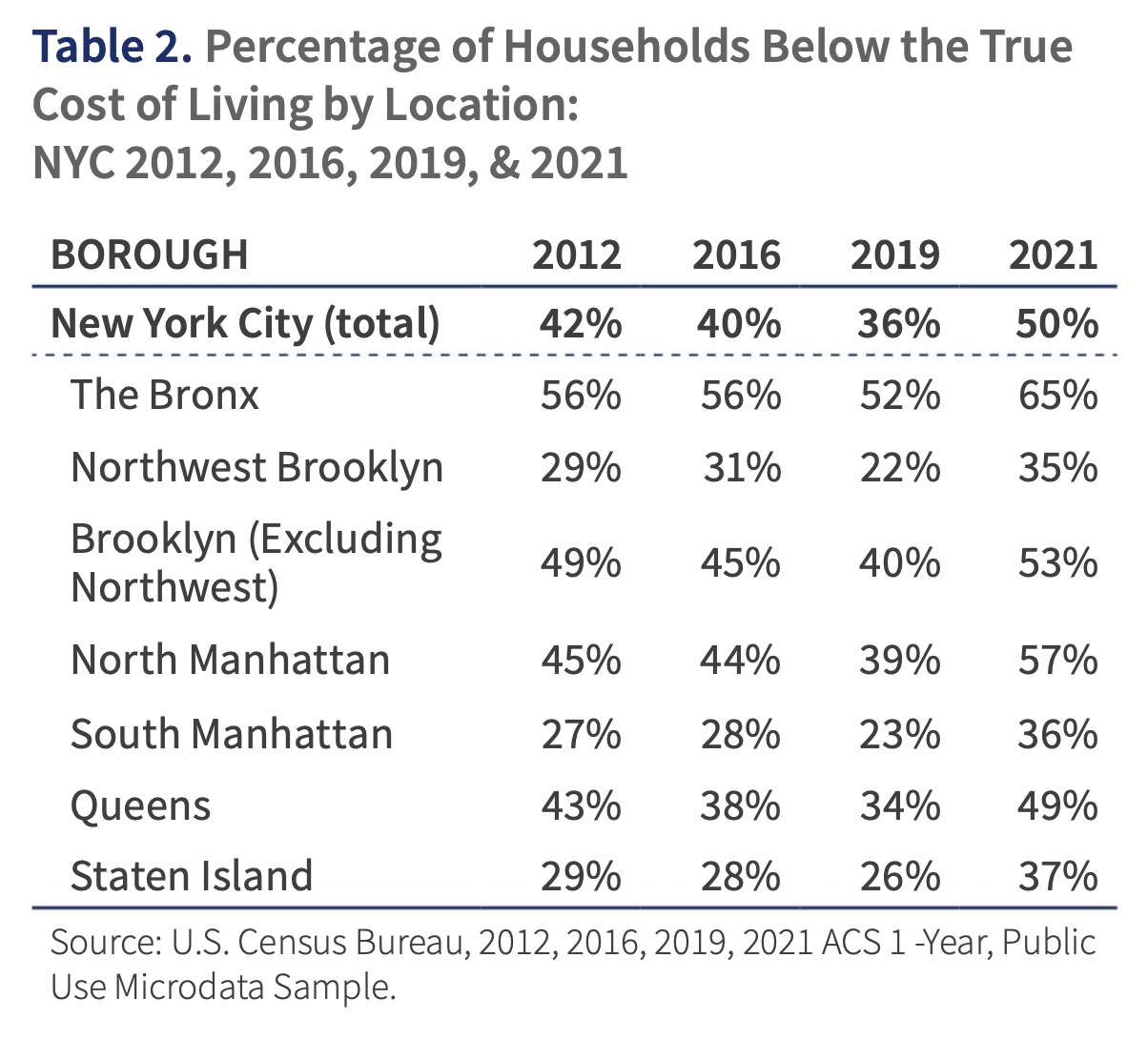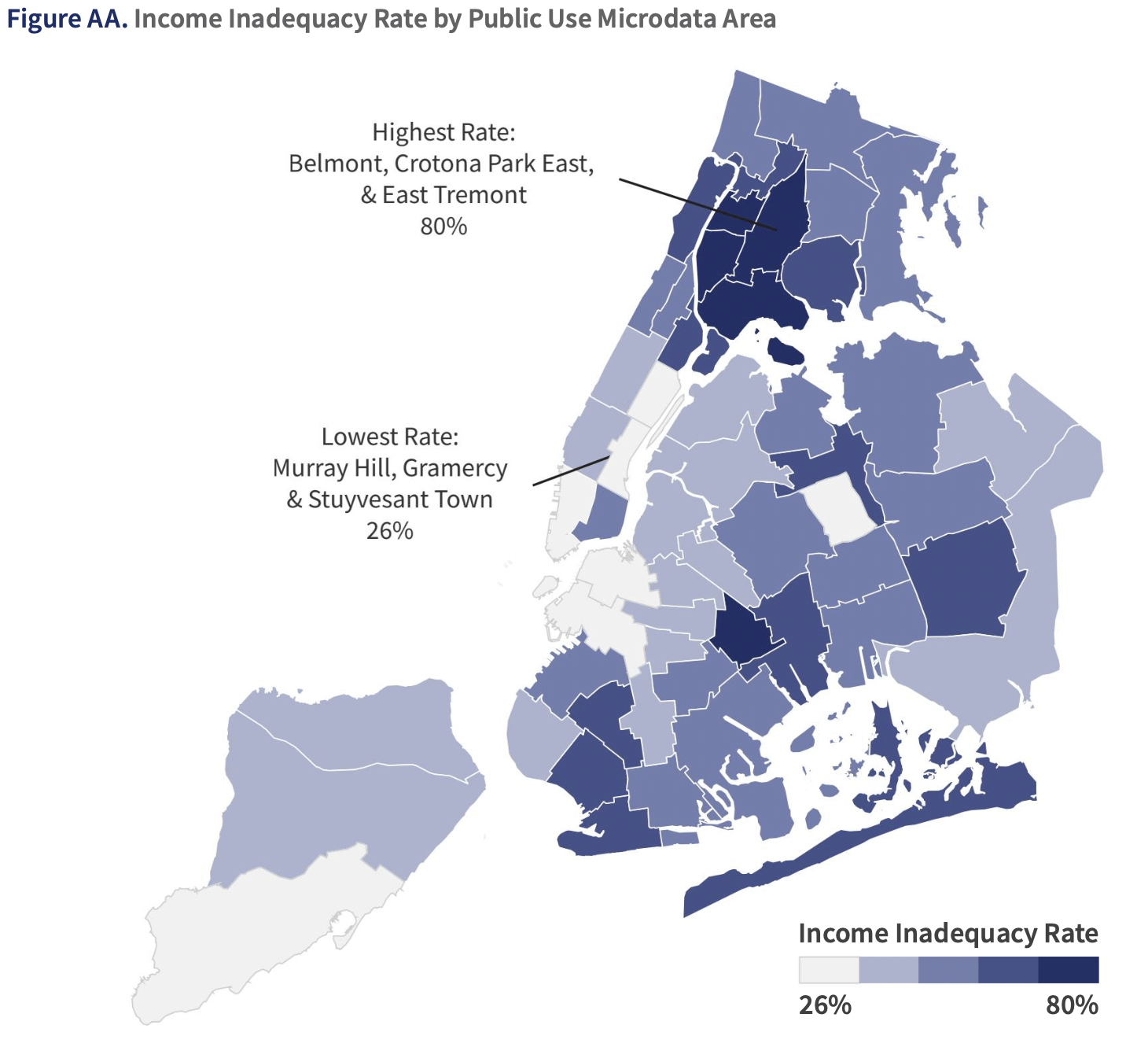Half of working families in New York City are unable to afford basic needs, a statistic that increased almost 40% from two years prior, according to a new report released today.
The NYC True Cost of Living report, titled “Overlooked & Undercounted: Struggling to Make Ends Meet in New York City 2023” is the seventh version of the report that examines economic insecurity by factors including location, race and ethnicity, and immigration status. The report was released by two nonprofits, the Fund for the City of New York and United Way of New York City.
Grace Bonilla, president and CEO of United Way of New York City, said in a statement that the report comes at a critical time following the COVID-19 pandemic and the economic impact on New York City’s labor force. The report can guide policymakers, employers, and advocates in advancing economic equity in New York City.
“It helps us to gain a more comprehensive understanding of how many New Yorkers are deeply affected by increasing economic insecurity and more specifically, where services are most needed,” Bonilla said.
The study surveyed approximately 2.6 million working households in New York City, a number that increased for this year’s study. Working households do not include adults over the age of 65, people with disabilities preventing them from working, and people living in “group quarters” such as college dorms, nursing homes, prisons and jails, mental hospitals, and shelters.
The 2023 report found that people of color, single mothers, and immigrants, particularly Hispanic immigrants, were the most financially insecure populations in New York City.
The percent of working families unable to “meet the minimum cost of living in New York City” went up from 36% in 2021 to 50% in 2023, according to the report. This means there are roughly 1.3 million households or approximately 3 million people living with financial instability and insecurity, who are unable to afford their basic needs including housing, food, transportation, and health care.
The areas with the highest rates of households struggling with income poverty are in The Bronx, particularly in neighborhoods such as Belmont, Concourse, Crotona Park East, East Tremont, Highbridge, Hunts Point, Melrose, and Morris Heights. Two Brooklyn neighborhoods, Brownsville and Ocean Hill, also have high income poverty rates, according to the report.
People of color also disproportionately face economic insecurity in New York City: 65% of Hispanic, 60% of American Indian households, 58% of Black, and 51% of Asian, Native Hawaiian, and Pacific Islander households are experiencing economic insecurity. The Hispanic population has more than double the economic insecurity rate of white households, per the report.
Immigrants are still experiencing vast income inequality in New York City, the report shows. Roughly 64% of undocumented families do not have incomes to meet their basic needs. Even 54% of naturalized citizens still can’t afford basic needs.
Employment could be one way to even out the playing field — though this isn’t guaranteed, especially for households led by people of color and single mothers. Currently, the government underestimates the true number of households living in poverty, and this “creates broadly held misunderstandings about who is in need, what skills and education they hold, and therefore what unmet needs they have,” the report states.
Other recommendations include increasing wages and improving access to benefits.
Lisette Nieves, president of the Fund for the City of New York, said in a statement that then 50% of working families are struggling to make ends meet, it’s time to reevaluate the status quo in New York City.
“We urge policymakers and employers to use this report as a guide to develop solutions that will lead to a stronger, healthier, more equitable New York,” Nieves said.
The report was produced with data primarily from the 2021 American Community Survey by the U.S. Census Bureau, as well as data from The New York State Child Care Market Rate Survey, the Office of Children and Family Services, and the U.S. Department of Housing and Urban Development.


Read more: Fifth Avenue Easter Parade Highlights

































